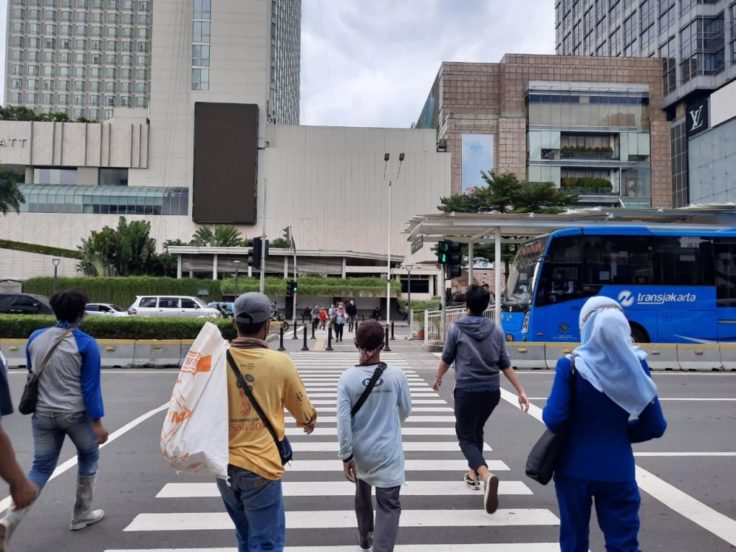
May 09, 2022
Compact & Electrified Cities Have the Potential to Massively Reduce Emissions
Meeting our climate goals starts in our cities.
With a $45 gift to ITDP you will support compact and electrified cities that reduce emissions and contribute to a healthy urban future.
We need your help in building a zero-emission future. With a $45 gift, ITDP will help cities achieve the compact and electrified transformation.
Startling recent reports from the UN’s Intergovernmental Panel on Climate Change (IPCC) are painting a striking picture of the grim future that awaits our planet, especially cities, without rapid and aggressive climate solutions. People in cities are already feeling intensifying heatwaves, floods, and droughts that are impacting every aspect of their lives — driving food scarcity, challenges to mobility, and violent conflict that force vulnerable families into displacement.
Curbing emissions to prevent the worst effects of climate change begins with transforming our cities. As populations continue to increase, how cities approach growth and development will determine the future of our planet and our lives. If we continue on the same path of building sprawling cities around gas-guzzling private vehicles instead of around people, we will stand little chance of reducing carbon emissions to the levels necessary to avoid climate catastrophe. Technologies like electric vehicles are promising but will not be enough on their own to stave off the worst climate impacts.
According to recent ITDP research, the solution is clear: we need both compact cities anchored by cycling, walking, and transit, and clean electric vehicles to meet our climate goals. Both approaches are necessary, and neither is sufficient alone.

Jakarta’s Compact + Electrified Journey
In Jakarta, we’re seeing what it takes for a growing city to move towards a transit-oriented and electrified future. Jakarta has become a regional leader in electric buses and traffic control by setting ambitious goals and piloting projects like Low Emission Zones. The city has taken major steps to shift away from car-oriented transport to mass transit, cycling, and walking. For instance, Jakarta quickly created temporary cycle lanes in response to COVID-19, which are now permanent due to the unprecedented interest in cycling. And the city’s kampungs, or urban villages that are physically and economically built around people, are being used as models for the way compact development can improve quality of life. There is still a lot of work left to do while the city experiences incredible growth.

Expanding Electrification
ITDP is on the forefront of working towards a future of zero-emission public transport by helping transition away from traditional, polluting diesel buses to clean, electric vehicles in cities around the world. From Rio de Janeiro to Monterrey to Jinan, we’re working with cities to overcome barriers to bus electrification and help cities purchase and put e-buses on the streets.

Cities Built for People
Creating compact cities requires cycling and walking be safe and accessible for people of all ages. This approach results in communities built around shorter commutes and more open spaces. Cycling and walking promotes less sprawl and less carbon emissions and also leads to less traffic, quieter streets, cleaner air, and healthier people. As part of our commitment to reducing emissions and increasing transport options, ITDP recently launched the Cycling Cities campaign to improve access to safe cycle lanes for 25 million more people around the world by 2025. This is an ambitious but necessary goal in our mission to make cities designed for all.
Compact cities that fully embrace electric public transport, cycling, and walking could help solve our biggest problems including mitigating the most severe climate impacts.
It’s time for cities to… get compact, go electric!
